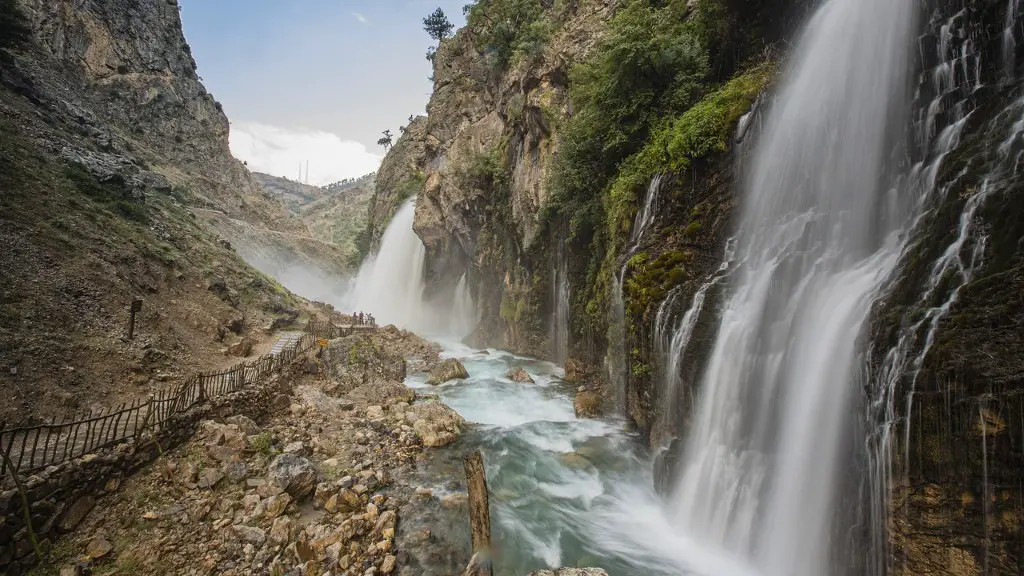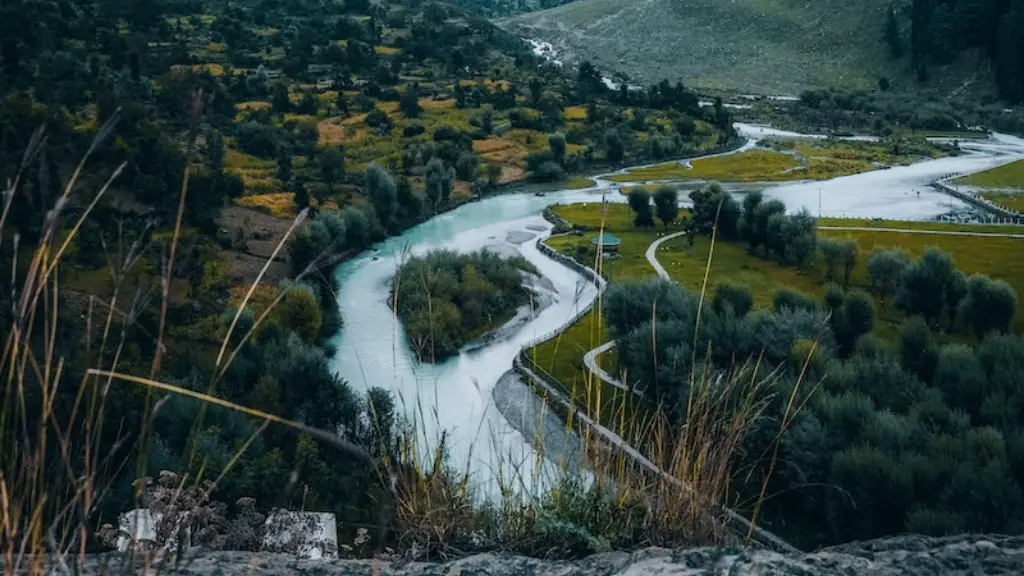Living in an area with levees for protection can be nerve-wracking for those living near them, especially during the rainy season. With such massive floods and downpours being experienced in the Mississipi River Basin and specifically in Baton Rouge, citizens are worried that their levees may not be able to protect them. People in the area remain divided over the current security of the levees; some argue that they are at risk of total destruction while others are certain they are safe and reliable.
For this article, we tried to investigate the safety of the levees, building a comprehensive and reliable understanding of their current state. To do this, we consulted experts and collected data on the safety of the levees. The experts we spoke to present differing estimates, yet all agree that the situation in Baton Rouge is dire.
The City of Baton Rouge and parts of East Baton Rouge Parish have seen at least three major floods since 2014. East Baton Rouge Parish was affected by the 2017 flood. At least 1,000 structures were damaged, while residential home flooding reached 1000 homes and 100 businesses due to winds being pushed along the river. In addition, underlying erosion caused a portion of the levee to collapse, thus exposing it to higher water levels.
Subsequently, during the 2019 high water levels, 200 to 400 people were evacuated from their homes, and two state highways were shut down in an effort to protect the levees. According to Louis Charbonneau, insurance director of the East Baton Rouge Parish, parts of the levees are still affected from the 2017 floods. An independent study by the US Army Corps of Engineers said that if severe weather should return, these levees may not be able to hold the water. This reflects the states of both the levees and the fear of the locals.
Recognizing this urgency, an upgrade of the Mississippi River levees was already carried out by 2019. Andrew Loos, chairman of the Alaskan Levee District, said that the renovations and strengthening of the levees would protect the people of Baton Rouge from additional catastrophic events. Loos also explained that the project was a conglomeration of different states and federal agencies, each contributing to its completion.
Dave Ederer of the United States Army Corps of Engineers said that the upgraded protection has increased the design flood level of the levees, which will allow them to hold a greater amount of water, should it begin to rise. This modified design flood level should protect the levees from erosion and breaches. Ederer is confident that the levees are strong enough to withstand weather events such as the 2017 floods. He believes that the upgraded levees are safer and more reliable than the old ones.
How Equitable Is the Levee Maintenance?
The safety of the levees for the people of Baton Rouge also depends upon the maintenance standards; however, this is not implemented equally. Poorly managed maintenance on existing levee systems is not helping the risk of flooding. This is due to the substandard quality of levees, the structure’s capability, and limited debris and sediment removal. According to the US Army Corps of Engineers, due to the low funding support, the levees have fallen into disrepair. Parts of the levees cannot keep up with the intensity of the weather.
The lack of funding affects the maintenance of the levees as well. For many of the levees under inspection, the maintenance staff is inadequate. While the City of Baton Rouge has a certain budget dedicated to maintaining such systems, the budget allocation to flood levels maintenance is limited. Therefore, this further weakens the levees.
What Can Be Done To Make The Levees Safer?
Ultimately, Orleans, East Baton Rouge, and Jefferson parishes are often the most exposed areas in Louisiana, given their proximity to the river. This shows that a unified public-private partnership is needed to address the safety and maintenance of the levees properly. Seeing as these 3 parishes contain major metropolitan areas, some private businesses have adopted initiatives to further protect their city from flooding. They have donated money to buy materials and technologies to increase the protection of their city from storm surge flooding and rain events.
In addition, the US Army Corps of Engineers has implemented equipment on the ground to ward off river flooding. This equipment has the capability of quickly constructing levees in the event of an emergency. Moreover, the Corps has also provided funds to upgrade and fix weak spots in the levee systems. They are also recommending home and property owners to build up flood walls to protect their homes and property in the event of an emergency.
The Impact of Climate Change
Climate change has had a significant impact on the Mississippi River Basin too, as it increases flooding frequency and intensity. With the upsurge in temperature, the water level of the river rises; this causes instability, erosion, and threats for various residents. Heavier rainfall in recent years has also added to the risks, and some say that this could be the new normal. The wetter winter climate affects flood and water levels profoundly, making numerous parts of the river basin unsecured and unsafe from flooding.
In East Baton Rouge, houses and businesses located within the vulnerable parts of the river basin are at risk of flooding every year. This has caused property damage, as well as disruption to the local economy. Even more alarming is that many believe that climate change is set to increase most of this flooding in the upcoming years.
What Are the Financial Implications?
The financial implications of flooding are also significant. According to a report by the National Oceanic and Atmospheric Administration (NOAA), the floods of 2017 cost $1.1 billion in damages, of which nearly $500 million was borne by homeowners. The floods and damages only continue to rise in the years to come. In addition, any repairs or upgrades for the levees come with a hefty price tag.
Managing flood risk associated with the Louisiana levees can be an issue, due to the levee districts having little to no consistent funding, as they are dependent on different grants. This makes it difficult to attain financial flexibility and acquire resources every year. Furthermore, the home and property owners are also struggling, as they are unable to access rented or leased insurance policies due to the frequent floods and unpredictability surrounding river flow.
Cities Working to Develop an Effective Flood Plan
Lordly, cities are working to develop an effective flood plan. The plan aims to focus on both strengthening the levees and upgrading the existing systems. In essence, the plan suggests that by having multiple tools that protect the residents from flooding, the risk of flooding will be minimized or alleviated. The program also looks to introduce flood-proofing, flood alleviation and disaster resilience plans for multi-purpose levee facilities.
Moreover, the levees could be shifted to an area that is resistant to flooding if it is located within the city’s jurisdiction. The development of the city-owned levee system is expected to reduce the costs associated with flooding, as they are realized in reduced financial damages following a storm.
In addition, the city is actively pursuing collaborations with private partners who may have the capacity to further invest in flood mitigation. It is expected that these partnerships could build upon the resources and knowledge of the region, improve the levee systems, and create more efficiency in the essential support infrastructure.
The Role of Technology and Innovation
Technology and innovation have become main players in the efforts to improve the safety of the Mississippi River levees in Baton Rouge. Various start-ups and technology companies have taken interest in the new challenge of evacuating and protecting the City from flooding. A range of technologies, from drones to other monitoring devices, are being employed in an effort to bolster the town’s levee infrastructure.
In addition, flood forecasting and inundation mapping technology have also been used to project the rise and effect of flood waters and create potential action plans that would reduce the risk of damages. This allows local authorities to better manage the flow of water and changes around the levees. Some companies have also begun to use global positioning satellites (GPS) to monitor levees in the area, allowing for greater precision.
Moreover, virtual reality (VR) technology is being used to create simulations of floods and better preventive measures that can be taken. VR simulations are also being used to train city personnel and citizens in emergency operations and other flood preparedness techniques.
Conclusion
Overall, the levees in Baton Rouge remain a cause for contention for many local citizens, as it is still unclear if the levees will protect them from flooding. At this moment, the safety of the levees has not been fully established. It is a joint responsibility – between both public and private bodies – to ensure that these levees remain safe and secure. Technology, innovation and collaboration are all essential to make sure that the levees in Baton Rouge can withstand potential flooding. Only then can the citizens of Baton Rouge feel secure in their own homes.





